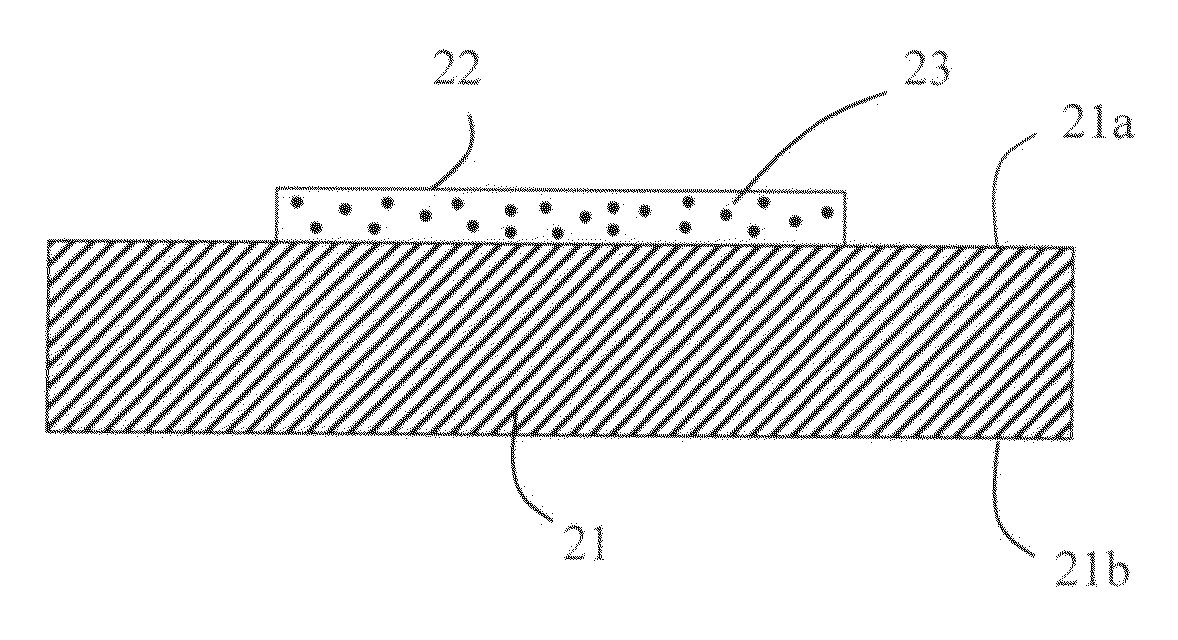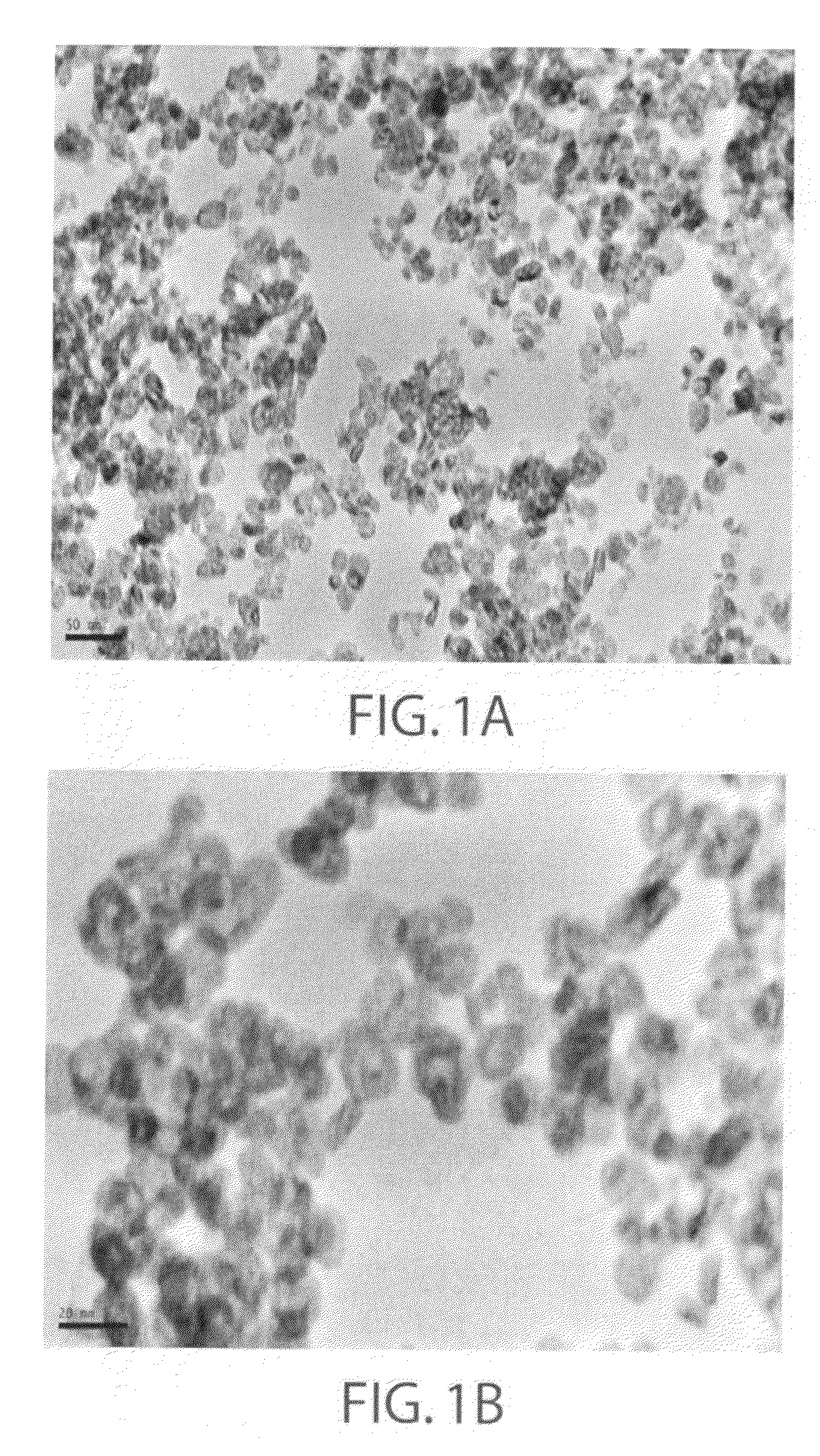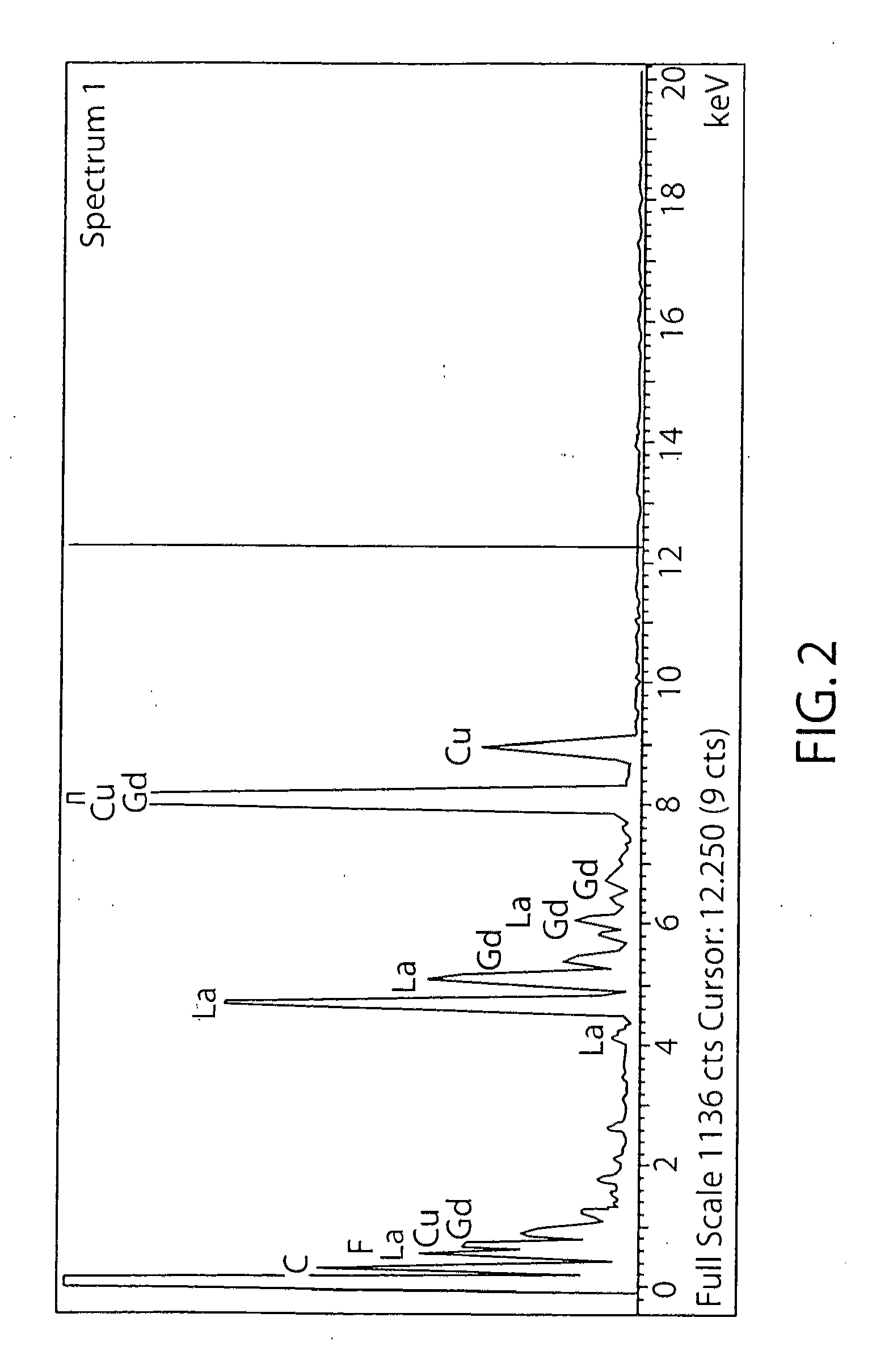Thermal neutron detectors based on gadolinium-containing nanoscintillators
a gadolinium-containing nanoscintillator and neutron detector technology, applied in the field of thermal neutron detectors and methods, can solve the problems of increasing the cost of scintillators in which sup>6/sup>li is higher than sup>6/sup>li, and exceeding the supply
- Summary
- Abstract
- Description
- Claims
- Application Information
AI Technical Summary
Benefits of technology
Problems solved by technology
Method used
Image
Examples
Embodiment Construction
[0026]The present invention involves a thermal neutron detector and method that employ Gd-containing nanoscintillators wherein thermal neutron irradiation is detected by observing scintillation events of the nanoscintillators in practice of the present invention. Exemplary solid state Gd-containing nanoscintillators for use in practice of the invention comprise Gd-containing compounds, such as gadolinium halides(e.g. GdF3), gadolinium oxides, and gadolinium garnets. The Gd-containing nanoscintillators can include Gd-containing compounds doped with other lanthanide elements (e.g. GdF3 doped with Ce), and non-Gd lanthanide-containing compounds doped with Gd (e.g. LaF3 doped with Gd) wherein Gd is present in an effective minor amount to exhibit observable scintillation in response to thermal neutron irradiation.
[0027]The Gd-containing nanoscintillators are employed in the form of nanoparticles or nanocrystals in a size range of about 1 nm to about 100 nm and are made pursuant to a meth...
PUM
 Login to View More
Login to View More Abstract
Description
Claims
Application Information
 Login to View More
Login to View More - R&D
- Intellectual Property
- Life Sciences
- Materials
- Tech Scout
- Unparalleled Data Quality
- Higher Quality Content
- 60% Fewer Hallucinations
Browse by: Latest US Patents, China's latest patents, Technical Efficacy Thesaurus, Application Domain, Technology Topic, Popular Technical Reports.
© 2025 PatSnap. All rights reserved.Legal|Privacy policy|Modern Slavery Act Transparency Statement|Sitemap|About US| Contact US: help@patsnap.com



